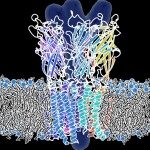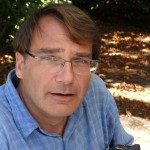Link to Pubmed [PMID] – 7783220
Link to DOI – 10.1006/jmbi.1995.0328
J Mol Biol. 1995 Jun 9;249(3):675-90.
Atomic contact potentials are derived by statistical analysis of atomic surface contact areas versus atom type in a database of non-homologous protein structures. The atomic environment is characterized by the surface area accessible to solvent and the surface of contacts with polar and non-polar atoms. Four types of atoms are considered, namely neutral polar atoms from protein backbones and from protein side-chains, non-polar atoms and charged atoms. Potential energies delta Ej(E) are defined from the preference for an atom of type j to be in a given environment E compared to the expected value if everything was random; Boltzmann’s law is then used to transform these preferences into energies. These new potentials very clearly discriminate misfolded from correct structural models. The performance of these potentials are critically assessed by monitoring the recognition of the native fold among a large number of alternative structural folding types (the hide-and-seek procedure), as well as by testing if the native sequence can be recovered from a large number of randomly shuffled sequences for a given 3D fold (a procedure similar to the inverse folding problem). We suggest that these potentials reflect the atomic short range non-local interactions in proteins. To characterise atomic solvation alone, similar potentials were derived as a function of the percentage of solvent-accessible area alone. These energies were found to agree reasonably well with the solvation formalism of Eisenberg and McLachlan.

